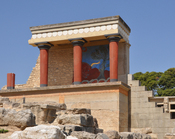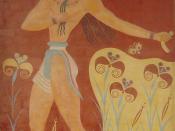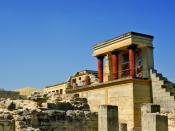Sir Arthur Evans (1851 - 1941)
Sir Arthur John Evans was born in Nash Mills, England in 1851. As a British archaeologist, he was educated at Harrow School, Brasenose College, the University of Oxford, and the University of Gottingen. He was also the curator of the Ashmolean Museum at Oxford for five years (1884 to 1908). Being the son of John Evans, he was also interested in archaeology. His greatest interest was Crete, an island that is situated five kilometres from the coast.
He developed an interest in examining inscriptions on ancient sealstones. This lured him to the Palace of Knossos, a palace that shows the sophisticated technology of a Bronze Age civilisation. Evans named the civilisation Minoan. In 1900, he began the excavation of Knossos, which is also known as the Palace of Minos. He continued to excavate until 1935. He wrote several books on this subject. One of his works include Palace of Minos.
He was knighted in 1911 and died in 1941.
His Work
Sir Arthur Evans is best known for his excavation of Knossos, which is situated on the island Crete in Greece in 1900. In order to unearth the area, he had to purchase the entire site. During the excavation, Evans found around 3000 clay tablets. They were inscribed in 2 scripts: Linear A and Linear B. Evans soon found out that Linear B was an early Greek dialect and Linear A was a Minoan script. Although Linear B was deciphered, Linear A wasn't.
When Evans completed the excavation, he performed restorations of the palace. Unfortunately, many scholars have criticised his restorations as inaccurate, and only an educated guess.
He wrote many books on his work. Some of his works include Cretan Pictographs, Prae-Phoenician Script, Scripta Minoa, Palace of Minos and Jarn Mound.


